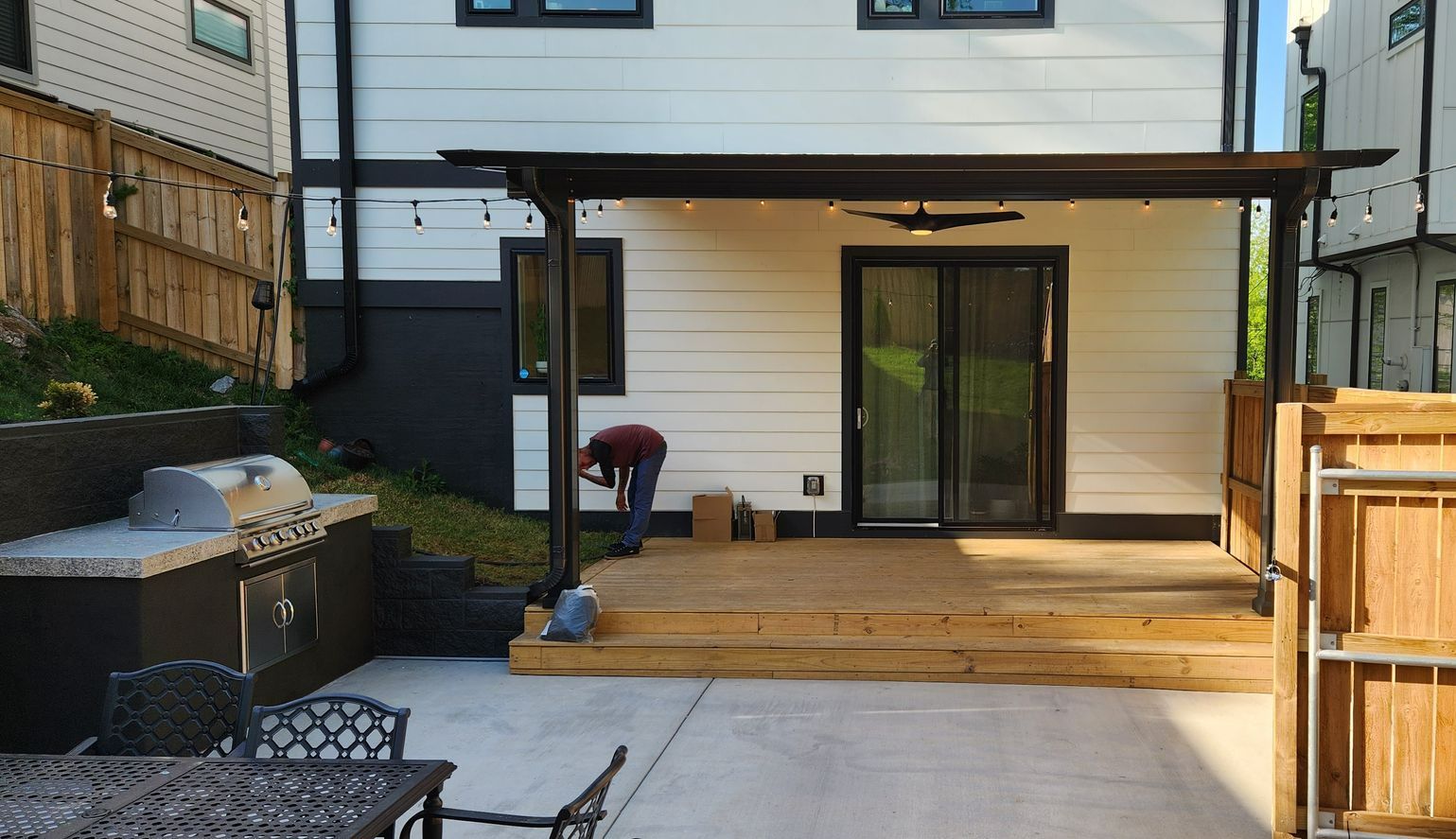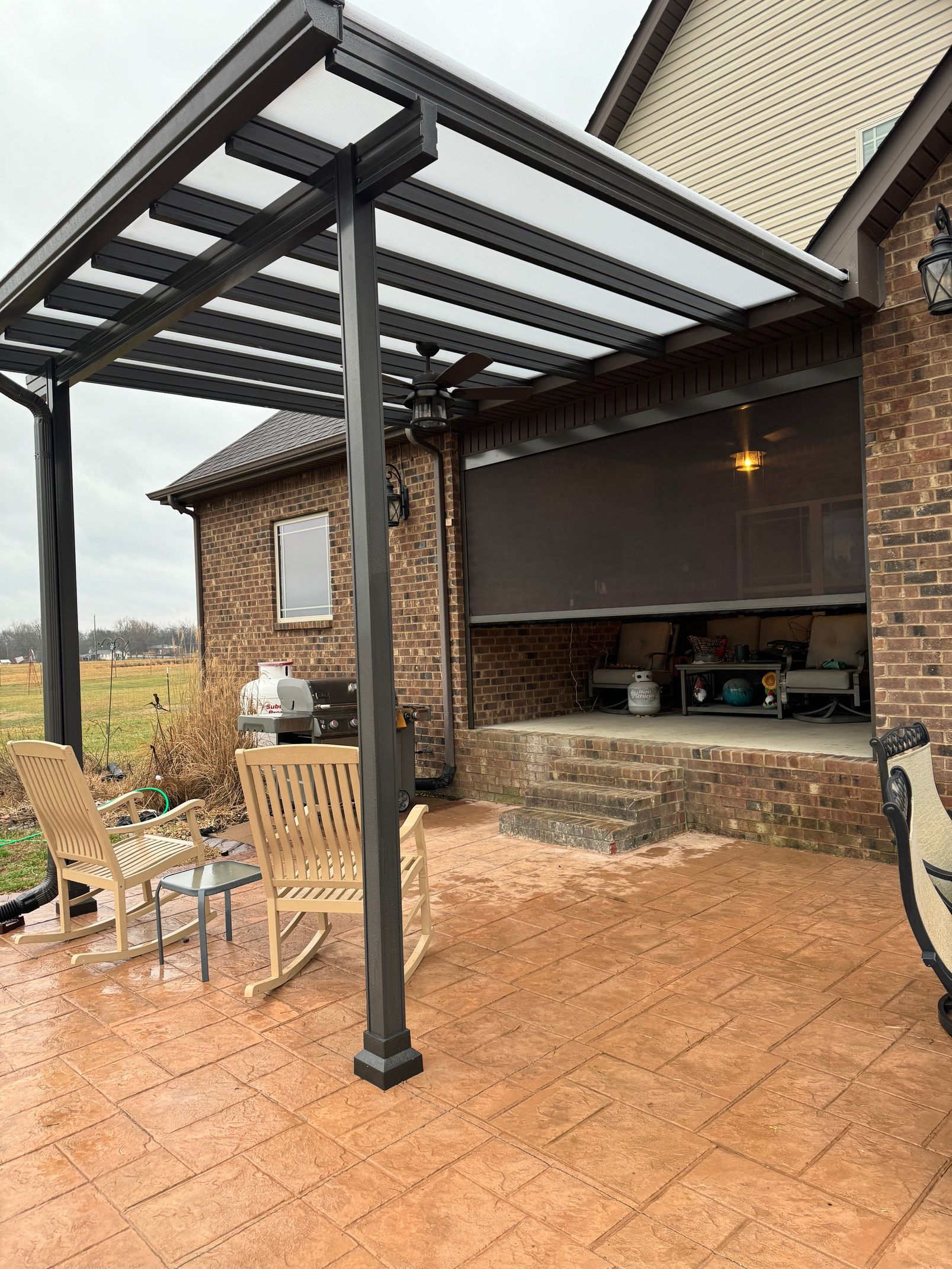Here’s How to Transform Your Outdoor Space this Summer | S&S Design Build
Are you ready to upgrade your backyard into an area where you can have BBQ’s & host family & friends? A patio cover & outdoor kitchen is just what you need. Between the two not only will you have enhanced your outdoor experience but you will also increase the usage of the backyard if you don’t already. Today you will learn all you need to know. From learning about the different materials, to matching your aesthetic with different designs. We’ll also cover things such as budgeting, upkeep, & legal requirements, so you know what to expect. So, let's get started on this exciting journey!

Let’s go over the benefits of having a patio cover & outdoor kitchen.
Patio Cover Benefits:
- Provides Shade
- Protects from Harmful UV Rays
- Shields from Rain & Snow
- Adds Value to your Home
- Creates an Additional Living Space
- Adds your Unique Aesthetic
Outdoor Kitchen Benefits:
- Keeps Unwanted Cooking Odors from Indoor Furniture
- Increases & Improves Home Value
- Great Way to Entertain Guests
- Helps Save Money & Energy
- Makes Cooking Easy & Convenient
Now that we know all the benefits of a patio cover & outdoor kitchen let’s go over the different types of patio covers.
First, we have the most common, including pergolas, awnings, and solid roof covers.
- Pergolas are open, providing partial shade & a sense of openness. Pergolas are ideal for a more natural & airier feel.
- Awnings are fabric or metal covers that attach to the exterior wall of your home & extends over the patio area. Awnings can be retractable & adjusted according to your preference. Awnings provide shade & protection from the sun & rain.
- Solid roof covers offer complete protection from the elements. Solid roof covers are made from aluminum, wood, or composite materials. Solid roof covers are more of a permanent protection & sturdy solution. They are ideal for those who want a fully covered outdoor space that can be used in any weather condition, making it perfect to go over an outdoor kitchen.
Now let’s talk materials,
We have:
- Wood, a classic that adds warmth & natural beauty. However it requires regular maintenance.
- Aluminum, lightweight & durable. Requires minimal maintenance, is resistant to rust & corrosion.
- Composite materials combine the durability of metal with the look of wood. Composite is resistant to fading, cracking, & warping.
Now I know you’re thinking of all the creative ways to add a patio cover to your home, but you should always keep in mind your budget, the maintenance requirements, & the overall look you want to achieve. Here are some steps to help you achieve your dream outdoor project.
- Step 1: Assess your outdoor space & determine the size & shape you want to achieve. Consider the following:
- Space Availability - measure the area, take into account any existing structures or obstacles.
- Functionality - determine how you intend to use the area. Would you like a large covered area to host large gatherings, or do you want to keep the get-togethers intimate.
- Step 2: Selecting style & color for your patio cover.
- Style - choose a style that complements both your taste and the architecture of your home.
- Color - you can choose a color that matches the existing color of your home or opt for a contrasting color to create a striking visual impact.
- Step 3: Obtaining necessary permits & ensuring compliance with local regulations
- Before proceeding with any installation, it’s crucial to obtain necessary permits & ensure compliance with local regulations. Now if you’re hiring a contractor for this project this is the part where you don’t worry, your local contractor will adhere to this. But if you’re DIY’ing the project make sure to do your local research by contacting your local building department.
- Step 4: Hiring a professional contractor or DIY installation
- The next step is to decide whether you want to hire a professional contractor or opt for a DIY installation. While DIY installations can be cost-effective, they require a certain level of skill & expertise. When hiring a contractor, they take care of all the heavy lifting, just do thorough research, and ask for recommendations from friends or family.
- Step 5: Installing the patio cover & ensuring proper maintenance
- Once you have chosen a professional contractor or decided on a DIY installation, it's time to install your patio cover. Follow the instructions provided by the manufacturer or the contractor & ensure that all safety precautions are taken during the installation process. If you're doing it yourself, take your time & follow the step-by-step instructions carefully. After the installation is complete, it's crucial to establish a regular maintenance routine to ensure the longevity & functionality of your patio cover & outdoor kitchen. Regular cleaning, inspection for damage, & timely repairs are essential to keep your patio cover & outdoor kitchen in top condition.
Congratulations! You have successfully transformed your outdoor space with a stylish & functional patio cover & outdoor kitchen. So, go ahead & enjoy your transformed outdoor space, whether it's for relaxation, entertaining guests, or simply soaking up the beauty of nature. Your stylish patio cover will be the perfect addition to your outdoor lifestyle.








